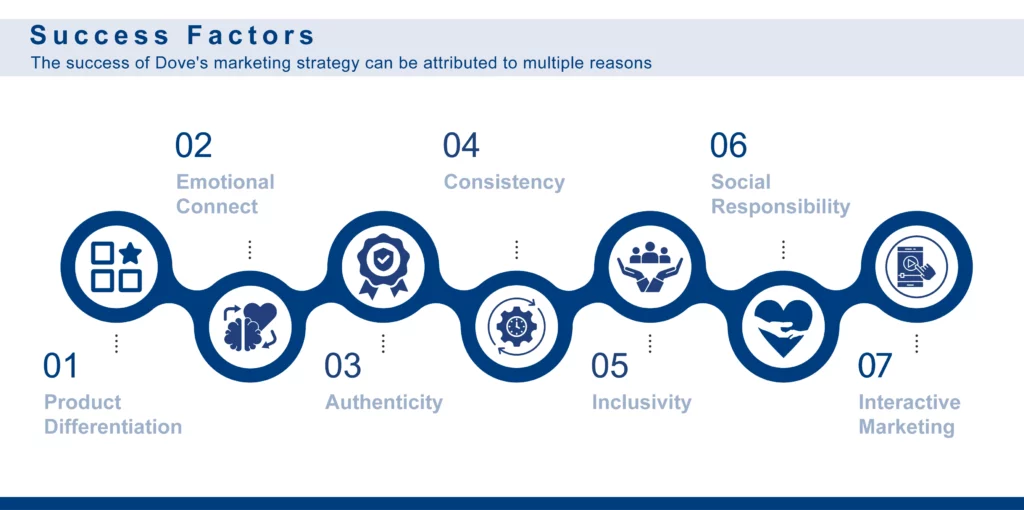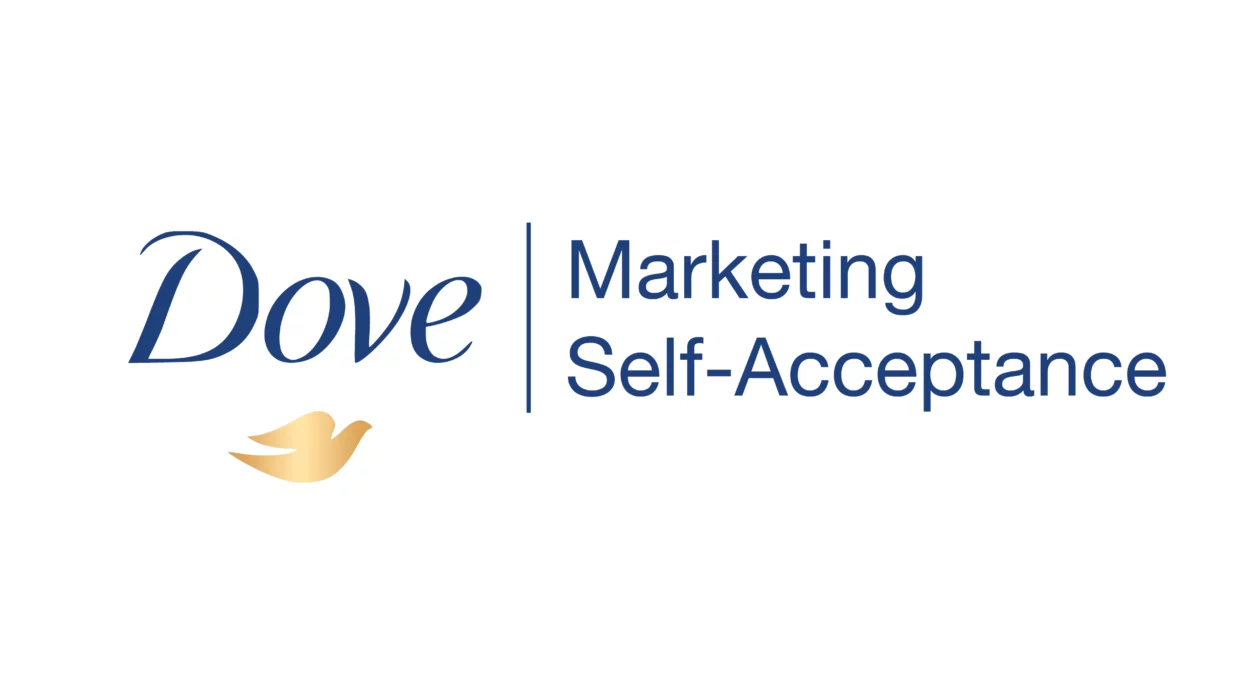Introduction
Dove, the “beauty bar” that first made its debut in the skincare industry in 1957 America has come a long way in the last 6 decades from a humble white beauty bar to a Masterbrand in personal care categories like body lotion, face cream, face wash, etc.
The journey of the Dove brand is a fascinating one and a particularly intriguing topic of study for businesses looking to create an identity unique from their competitors.
The Dove Journey
The over six-decade-long journey of Dove had its humble beginning in post-World War II America. The Dove beauty bar, advertised as an alternative to soap, revolutionized skincare for women.
1957-1967
In a time when brands catered to men, Dove made its mark by selecting women as its target market. From the very inception of the brand, Dove was introduced not as a soap but as a beauty bar which was ‘much better for your skin’ than soap due to ‘one-quarter cleansing cream’.
It was at this time that Unilever decided to hire David Ogilvy’s ad agency, a decision that was a turning point for the brand’s market position.
David Ogilvy’s vision for Dove is made clear in his book “On Advertising” where he states:
“While I could have depicted Dove as a utilitarian cleanser for men with grimy hands, I opted instead to position it as a luxurious toilet bar catering to women with parched skin.
The tagline that emerged victorious in tests was: ‘Dove creams your skin while you bathe.'”
With the advent of television, the iconic Dove advertisement featuring cream being poured into the Dove bar – an image synonymous with Dove even today, flooded the print and visual media.
1967-1977
With women joining the workforce in the 1960s Dove changed its marketing strategy to stay abreast with the changing times. It was during this period that Dove made the strategic decision to use real women as the face of the brand instead of models. Ads featuring everyday women sharing their experiences with Dove bars became the talk of the day.
1977-1987
This decade brought with it the approval of dermatologists. Dove’s new marketing campaigns while continuing with the old ‘good for your skin’ advertising started pushing ads stating that Dove was now a dermatologically trusted brand. The ‘Try Dove for seven days’ marketing strategy worked wonders for the brand.
1987-1997
Dove’s market by now had expanded from US to over 50 countries worldwide. It was during this time that Dove began its famous litmus test ad which further highlighted the mildness of the Dove bar. Another milestone in Dove’s journey began in the mid-90s when Dove took its first steps towards becoming a Masterbrand with the introduction of Dove moisturizing body wash.
1997-2007
This decade saw the advent of the internet and the opening of a whole new way to market globally. Dove taking advantage of this not only expanded its global operations but also entered other beauty segments with products like deodorants, body lotions, cleansers and shampoo.
Dove once again took the assistance of Ogilvy advertising to launch the Dove Campaign for Real Beauty in 2004. This campaign successfully changed the perception of real beauty from what was depicted online and on media platforms to ‘being comfortable in your own skin’. This initiative by Dove saw a shift in advertising strategy from product-centric to customer-centric. The increase in sales from $2 billion to $4 billion in three years only goes to show the success of this marketing strategy.
2007-till date
Dove made the customer-centric ‘real beauty’ advertising its calling card and has since then continued its advertising and marketing strategy keeping in sync with this idea. The 2013 short film “Dove Real Beauty Sketches” produced as part of the ongoing Dove Campaign for Real Beauty became one of the most successful marketing campaigns by Dove.
The campaign garnered over 4.6 billion Public Relations and blogger media impressions in just 2 months of its launch.
Dove continues its marketing success with the Dove brand being valued at approximately 6.5 billion U.S. dollars in 2023.
It is evident from Dove’s journey that it has consistently been on top of its marketing game. But what is the reason for this continued success?
Success Factors
The success of Dove’s marketing strategy can be attributed to multiple reasons:

1. Product Differentiation:
From the very beginning, Dove has focused on differentiating its products from competitors. The marketing of Dove as a beauty bar rather than a soap and the unique curved design of the Dove bar have been its USP from its very inception.
2. Emotional Connect:
Dove’s marketing campaigns like “Dove Campaign for Real Beauty’ and the latest ‘Reverse Selfie’ have been successful in tugging at the consumer’s heartstrings. By opening up a platform for discussion on body positivity and self-acceptance Dove has raised a voice against society’s unrealistic beauty standards that have been a source of anxiety for most women worldwide.
3. Authenticity:
With the bold decision to use real women with different body types, ages and ethnicities as the face of its campaigns instead of models that meet the media’s beauty standards, Dove has become a symbol of authenticity. If the ever-growing market for Dove products is any indication, this authenticity has been successful in its goal to resonate with its consumers.
4. Consistency:
Consistency is the most effective way to gain customer trust and build brand loyalty. Understanding the importance of consistency Dove has been consistent in its marketing message promoting ‘real beauty’ and self-confidence.
5. Inclusivity:
Dove has managed to gather the support of consumers worldwide due to its inclusive marketing strategy. By celebrating the different standards of ‘real beauty’ Dove has broadened the very definition of what is considered beautiful.
6. Social Responsibility:
With its message of body positivity and self-acceptance Dove has successfully changed the worldview on beauty. In keeping with its brand message Dove has undertaken initiatives like the Dove Self-Esteem Project’s #NoDigitalDistortion movement to help young impressionable people learn about body confidence and acceptance. Dove has empowered and educated over 94,500,000 youngsters since 2004 through its Self-Esteem Project.
7. Interactive marketing:
In its six-decade-long journey, Dove has on multiple occasions used interactive marketing to attract customers. Dove encourages its customers to share their experiences and stories through interactive online forums.
Conclusion
Dove, with its focus on social messaging in marketing has opened a new and unique marketing strategy segment. It is a shining example of how a humble product can become a Masterbrand through its ability to connect with its consumers through an inclusive, authentic, and consistent marketing strategy.
If you want an insight into the marketing strategies of other market leaders subscribe to Ikana Business Review.





